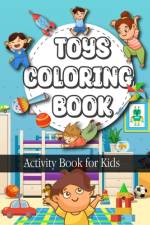av Farhan Ahmed
155,-
Sight words, also known as high-frequency words, are words that frequently appear in written text and do not necessarily follow standard phonetic patterns. These words are often taught to early readers because they occur so frequently that recognizing them by sight (hence the name "sight words") is essential for fluent reading. Common examples of sight words include words like "the," "and," "is," "was," "to," "it," "I," "you," "he," "she," "we," and "they."Here's how sight words are helpful for children learning to read: Building Reading Fluency: Sight words are among the first words that young readers should learn because they appear so frequently in text. Recognizing these words by sight helps children read more smoothly and quickly, enhancing their overall reading fluency.Boosting Confidence: When children can read and recognize sight words easily, it boosts their confidence in their reading abilities. They feel a sense of accomplishment as they read familiar words successfully.Comprehension: Mastering sight words early on frees up cognitive resources for children to focus on understanding the meaning of the text. If they are constantly struggling with basic words, comprehension can suffer.Enhancing Vocabulary: While sight words are often basic, they form the foundation for more advanced vocabulary acquisition. Once children become proficient in recognizing sight words, they can move on to more complex reading.Independent Reading: Sight words are essential for young children to read books independently. When children can read common words without constant assistance, they can enjoy books on their own.Confidence in Writing: As children learn to read sight words, they can also use them in their writing. This helps them express themselves more effectively in written form.Early Reading Success: Success in reading early on is crucial for a child's overall academic success. Sight words play a pivotal role in helping children become competent and confident readers.Educators and parents often use flashcards, games, and activities like the one you mentioned in your previous question (activity books) to teach and reinforce sight words with young learners, making the learning process fun and engaging.






